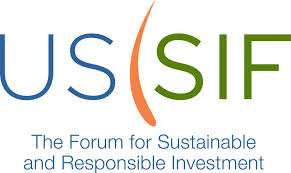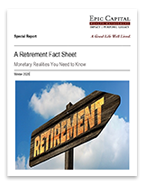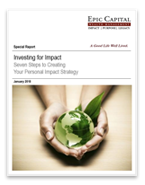US SIF Foundation Releases 2016 Trends Report
Nov 15, 2016

WASHINGTON, D.C., November 14, 2016 – Sustainable, responsible and impact investing assets now account for $8.72 trillion, or one in five dollars invested under professional management in the United States according to the US SIF Foundation’s biennial Report on US Sustainable, Responsible and Impact Investing Trends 2016 which was released today.
The biennial Trends Report—first conducted in 1995 when ESG assets totaled $639 billion—provides comprehensive data on US asset managers and institutional investors using one or more sustainable investment strategies and examines a broad range of significant ESG issues such as climate change, human rights, weapons avoidance, and corporate governance. US SIF Foundation CEO Lisa Woll and Trends Report project directors Meg Voorhes, US SIF Foundation, and Joshua Humphreys, Croatan Institute, will host a media teleconference today at 1:00 p.m. ET to discuss report findings.
“The trend of robust growth in sustainable and impact investing is continuing as investment managers apply ESG criteria across broader portions of their portfolios, often in response to client demand,” said Lisa Woll, US SIF Foundation CEO. “Asset managers, institutional investors, advisors and individuals are moving toward sustainable and impact investing to advance critical social, environmental and governance issues in addition to seeking long-term financial returns.
“A diverse group of investors is seeking to achieve positive impacts through such strategies as shareowner engagement or investing with an emphasis on addressing climate change, corporate governance, and human rights including the advancement of women.”
The significant growth in ESG assets reflects demand from individual and institutional clients, growing market penetration of SRI products, the development of new products that incorporate ESG criteria and the incorporation of ESG criteria by numerous large asset managers across wider portions of their holdings.
Among asset owners who have been advocates for ESG investing is the Wallace Global Fund, a donor for the 2016 Trends Report. “We have been a sponsor of the Trends Report since 2010 as it is the most detailed and meaningful study of sustainable and impact investing available,” said Ellen Dorsey, Executive Director of the Wallace Global Fund. “It supports our efforts to promote an informed and engaged citizenry, to fight injustice and to protect the diversity of nature as well as our own efforts to have a 100% mission aligned endowment.”
Summary of Findings
The research found:
$8.10 trillion in US-domiciled assets at the outset of 2016 held by 477 institutional investors, 300 money managers and 1,043 community investing financial institutions to which various ESG criteria are applied in investment analysis and portfolio selection, and
$2.56 trillion in US-domiciled assets at the start of 2016 held by 225 institutional investors or money managers that filed or co-filed shareholder resolutions on ESG issues from 2014 through 2016.
These two segments of assets, after eliminating double counting for assets involved in both strategies and for assets managed by money managers on behalf of institutional investors, yield the overall total of $8.72 trillion, a 33 percent increase over the $6.57 trillion that the US SIF Foundation identified in sustainable investing strategies at the outset of 2014.
The top reasons managers report incorporating ESG factors include client demand (85%), mission (83%), risk (81%), returns (80%), social benefit (79%) and fiduciary duty (64%).
The number of investment vehicles and financial institutions incorporating ESG criteria continues to grow and includes mutual funds, variable annuities, ETFs, closed-end funds, REITs, and other alternative investments.
The leading ESG criteria that institutional investors consider are restrictions on investing in companies doing business in regions with conflict risk (particularly in countries with repressive regimes or sponsoring terrorism) and consideration of climate change and carbon emissions.
While the number of institutions and money managers actively involved in filing shareholder resolutions has remained relatively stable over the past four years, the proportion of shareholder proposals on social and environmental issues that receive high levels of support has been on the rise. Further, money managers and institutional investors are pursuing engagement strategies on ESG issues in addition to filing shareholder resolutions at publicly traded companies.
For additional Trends Report findings and information please visit www.ussif.org/trends This material was created by US SIF.
Variable annuities are suitable for long-term investing, such as retirement investing. Gains from tax-deferred investments are taxable as ordinary income upon withdrawal. Guarantees are based on the claims paying ability of the issuing company. Withdrawals made prior to age 59 ½ are subject to a 10% IRS penalty tax and surrender charges may apply. Variable annuities are subject to market risk and may lose value.
Investing in mutual funds involves risk, including possible loss of principal.
An investment in Exchange Traded Funds (ETF), structured as a mutual fund or unit investment trust, involves the risk of losing money and should be considered as part of an overall program, not a complete investment program. An investment in ETFs involves additional risks such as not diversified, price volatility, competitive industry pressure, international political and economic developments, possible trading halts, and index tracking errors.
Investing in Real Estate Investment Trusts (REITs) involves special risks such as potential illiquidity and may not be suitable for all investors. There is no assurance that the investment objectives of this program will be attained.
Alternative investments may not be suitable for all investors and should be considered as an investment for the risk capital portion of the investor’s portfolio. The strategies employed in the management of alternative investments may accelerate the velocity of potential losses.
More Insights
You’re beginning to accumulate substantial wealth, but you worry about protecting it from future potential creditors. Whether your concern is for your personal assets or your business, various tools exist to keep your property safe from tax collectors, accident victims, health-care providers, credit card issuers, business creditors, and creditors of others. To insulate your property … Continue reading “Estate Planning – Protecting Your Assets”
You know how important it is to plan for your retirement, but where do you begin? One of your first steps should be to estimate how much income you’ll need to fund your retirement. That’s not as easy as it sounds, because retirement planning is not an exact science. Your specific needs depend on your … Continue reading “Estimating Your Retirement Income Needs”
As June begins, markets continue to navigate a complex landscape shaped by trade policy shifts, an uncertain economic and earnings outlook, and bond market headwinds. Several key developments in recent weeks may have implications for markets:
April showers came a month early as stocks fell in March. Tariffs were the primary cause of the market jitters, although that uncertainty became too much for markets to shrug off once economic data started to weaken.
A successful investor maximizes gain and minimizes loss. Though there can be no guarantee that any investment strategy will be successful and all investing involves risk, including the possible loss of principal, here are six basic principles that may help you invest more successfully.
Services
Epic Capital provides the following comprehensive financial planning and investment management services: Learn More >


 Top of Page
Top of Page











